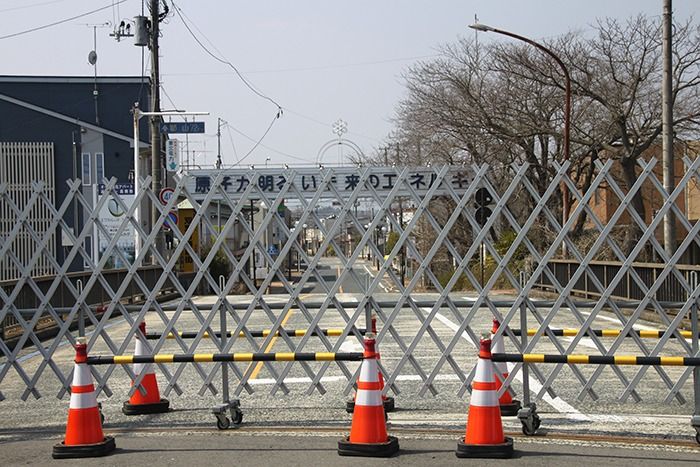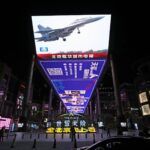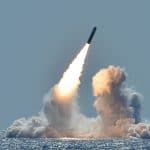Nuclear safety vs security: Can the two cultures be harmonized?
By Igor Khripunov | July 6, 2018
 The weak and untruthful US federal response to the COVID-19 pandemic is reminiscent of the Japanese government's response to the Fukushima disaster.
The weak and untruthful US federal response to the COVID-19 pandemic is reminiscent of the Japanese government's response to the Fukushima disaster.
While the earthquake and tsunami leading up to what happened at Fukushima Daiichi could not have been avoided, certain culture-based measures could have been implemented before, during, and immediately after the accident to help prevent the accident or mitigate the consequences. The International Atomic Energy Agency (IAEA) report, The Fukushima Daiichi Accident, identified complacency among the management and workforce as one of its major root causes: “Because of the basic assumption that nuclear power plants in Japan were safe, there was a tendency for organizations and their staff not to challenge the level of safety.”
A 2012 report to Japan’s National Diet—the country’s legislature—found something similar; the human factor was the main theme of The Report of the Fukushima Nuclear Accident Independent Investigation Commission. Its chairman called it a “profoundly man-made disaster” whose fundamental causes are in the ingrained conventions of Japanese culture: reflective obedience, reluctance to question authority, devotion to “sticking with the program,” groupism, and insularity.
Now that some time has passed and we are able to look back dispassionately upon the events of that frantic time, what have we learned about nuclear safety culture and nuclear security culture? (I use the word culture here to mean people’s beliefs and attitudes.) Safety and security may sound more or less identical to the uninitiated, but are really two entirely separate features. What are their roles as motivators for the individuals who are tasked to upgrade and maintain safety and security? What really is nuclear safety and what is nuclear security? Can the respective cultures around each of them be harmonized so they collaborate more efficiently?
One thing we do know from the various analyses of Fukushima Daiichi: Safety margins could have been eroding steadily for years. Human beings are all-too-adaptable creatures; people were gradually accepting declining conditions in work practices and ignoring the risks they consequently brought on, unnoticeably drifting towards prioritizing other concerns over safety. Risks might have been played down because “nothing has happened,” which can eventually lead to a severe event occurring. Complacency is a human trait observed in our daily life but able to lead to catastrophic events in the nuclear field.
Interface between the cultures of safety and security. But before we go further, what is nuclear safety, and how does it differ from nuclear security? Granted, the two fields often overlap; the basic ideas and elements of nuclear safety culture as developed by the IAEA were instrumental in the identification of the need for a parallel nuclear security culture. Indeed, Section 2.4 of the IAEA’s 2008 Nuclear Security Culture: Implementing Guide states that “….the principal shared objective of security culture and safety culture is to limit the risk resulting from radioactive material and associated facilities. The objective is largely based on common principles, e.g. a questioning attitude, rigorous and prudent approaches, and effective communication and open two-way communication.” These principles are major characteristics of personnel behavior responsible for safety and security.
But while nuclear safety and nuclear security share some common features, they are not the same. For nuclear safety culture, the primary focus is on how to plan for dealing with unintended acts or conditions that could lead to disruptions, breakdowns, and releases of hazardous substances from authorized research, production, and transportation chains. Responses emphasize engineered protection and safety management.
In contrast, for nuclear security culture, the primary focus is on how to anticipate and counteract the intentionalmisuse of infrastructure and materials by terrorists, criminals, or other threatening elements. Responses emphasize intelligence gathering, physical protection, vigilance, and compliance.
This difference can be seen in the IAEA definition of nuclear security culture, which it describes as the “assembly of characteristics, attitudes, and behavior of individuals, organizations and institutions which serves as a means to support and enhance nuclear security.” The scope of this cultural approach can be large, as can be deduced from the IAEA definition of nuclear security: “prevention and detection of and response to, theft, sabotage, unauthorized access, illegal transfer or other malicious acts involving nuclear material, other radioactive substances or their associated facilities.”
Developed in the aftermath of the 9/11 terrorist acts, nuclear security culture has become a concept that cuts across disciplines, covering a much wider playing field than originally thought. Though it emerged as a somewhat vague concept, nuclear security culture is maturing into a multifunctional discipline. Practicing it efficiently demands special methodologies and skills—including shared databases of real incidents and lessons learned, along with realistic testing, self-assessment performance, and culture enhancement—to help find and fix weaknesses that terrorists or thieves could exploit. In this sense, nuclear security culture is akin to the safety culture that emerged much earlier as a discipline following the Chernobyl disaster—whose cause was attributed to the deficient human factor.
In contrast, nuclear safety culture is often described as the core values and behaviors resulting from a collective commitment by leaders and individuals to emphasize safety over competing goals. But both disciplines are subsets of organizational culture, based on shared principles that pursue a common objective: operating a nuclear facility at an acceptable level of risk.
But while their subordinate objectives are achieved through different means, the cultures of nuclear safety and nuclear security do have a common primary goal: to protect human lives, society, and the environment.
A rationale for harmonization. Understanding where safety and security intersect, and discerning where there are opportunities to exploit synergies between the two, is critical to nurturing an overarching culture of harmonized security and safety. Since these elements of a comprehensive organizational culture are inextricably intertwined, the most effective and efficient approach to creating a program that fosters security and safety culture demands that leaders determine which functions are complementary and which are not.
Given that the rationales behind nuclear safety culture and nuclear security culture differ (the difference between unintentional and intentional hazards), there will obviously be areas of contention. The goals of safety and security programs may at times conflict or otherwise have mutually exclusive objectives. For example, while for safety purposes it may be desirable to identify and quantify the amounts and types of radiological or nuclear materials in a specific area or facility, from a security perspective this disclosure could increase the attractiveness of the site as a prospective terrorist target.
However, while conflicts between safety and security may require detailed consideration at the planning and implementation stages, the objectives of nuclear safety culture and nuclear security culture are more universal and less likely to conflict at the leadership level. Indeed, leaders are recognized as the role models for effective and robust safety and security culture and as individuals capable to foster an approach that integrates safety and security in a mutually supportive manner. Nuclear safety culture and nuclear security culture function best when common elements and functions are recognized and exploited—while also preserving each one’s distinct objectives and goals. This dualism demands negotiation, cooperation, and understanding among participants, but is attainable. For these reasons, finding the common ground between these cultural programs is imperative.
A key area for harmonizing safety and security culture is in evaluating the results and effects of safety- and security- related events. Although their causes may be quite different, the results of an event initiated by a manmade intentional act may have some or all of the same consequences as an event that occurs by accident. The Fukushima Daiichi nuclear accident of 2011 is a primary example of this concept. Although the damage to the reactors was caused by an earthquake and a tsunami, a manmade attack with the same intent would have been equally capable of crippling Japan’s economy and power supply. Given this paradigm, the interface between security events (manmade, intentional, malicious events) and safety events (natural events) requires a carefully calibrated harmonization of culture-driven safety and security.

Given that however they are initiated, the outcomes of these events may have similar results in terms of emergency response, military or paramilitary action, mobilization of health or medical resources, and the tapping of international support—to name just a few examples—the harmonization of nuclear safety and security is essential for using limited resources efficiently.
It is also desirable to evaluate how the intersection between safety and security can be used to benefit an organization or operation, in terms of optimization and streamlining. A specific element that will have a major impact on both nuclear safety and nuclear security cultures is the human element within the organization or entity.
Introducing cultural change can be a challenging and time-consuming endeavor. Since safety culture is better recognized and consequently more acceptable to constituents within organizations, invoking well-accepted tenets of safety helps transpose concepts to security efforts. In any case, the interface between security culture and safety culture can benefit from consolidated management and shared business practices
A roadmap for harmonizing safety and security cultures. There has been a great deal of discussion in recent years regarding the value of both nuclear safety culture and nuclear security culture when developing and implementing either program.The concept of shared objectives is critical to safety and security base operations, which in turn provide the substructure for higher-level safety and security programs, and ultimately for op-level safety and security culture.
All sites and facilities around the world that conduct nuclear operations, or use nuclear or radioactive material, are prospective targets for criminal or terrorist activities. These activities may involve attempts to acquire or disperse radioactive materials, sabotage safety and security systems, disrupt operations, or attack transportation processes for malicious purposes. In recent nuclear facility threat and vulnerability assessments, threats were found to involve both external and insider participation, and could be conducted for a wide range of objectives and motivations. There is a wide spectrum of threats to nuclear facilities, from minor disruptions to major breaches of nuclear containment, requiring a highly sophisticated plan of action and protection to prevent or mitigate the effects of planned and coordinated attacks. Malicious acts, however, are not the only concerns for nuclear operations; scenarios have been postulated where inadvertent acts of worker safety violations can also result in dire consequences. Therefore, considerations for protection against both malicious (security-based) and unintentional (safety-based) actions must be evaluated within each nuclear entity.
National and international nuclear safety and security culture practices indicate that you can better prepare for, and mitigate the risk of, an attack or an accident by developing and implementing a harmonized approach to nuclear safety and security throughout all levels of an operation and organization.
Several specific areas are most ripe for harmonization. Mission statements and plans of actionshould clearly outline the benefits of harmonization, in terms of values, time schedule, and strategy, for example. Training andqualificationscan contribute by holding integrated safety and security training sessions, and conducting joint training to raise safety-security awareness. Self-assessment and enhancementwill benefit from inclusion of both safety and security assessors when conducting self-assessments. Such combined assessments can lead to the development of a comprehensive understanding of safety and security culture and identify obstacles in the way of their harmonization. Corrective action plansshould be used to determine problems and deficiencies in the process of harmonization. Specific, measurable, action-based, realistic, and timely corrective action planscan drive improvement and support implementation of a best practices approach. Dissemination of lessons learned and casestudiesmake use of the experience extracted from a project, operation or assignment that should be taken into account in future endeavors.
The process of developing lessons learned may include the conduct of root cause analyses to determine the human element in situations. A goal for lessons learned should be to increase communication about harmonization with attention placed on the human element. Under Emergency Response Plans safety and security representatives should work together to prepare and upgrade emergency response plans to ensure that both safety and security are given equal consideration. Options for a harmonized nuclear safety and security culture that could result in improved emergency response planning might include integrating the regulatory process, and addressing the involvement of all those who have a stake in the outcome.
If correctly accomplished, the harmonized nuclear safety and security culture process can result in an efficient and effective cultural program that ensures safety and security. Further progress in the design and operation of nuclear installation can make this process not only desirable but imperative. Everyone involved must understand the importance of nuclear safety and security culture, and the benefits of harmonizing the two; and everyone must believe that the threat and danger to the safety and security of operations are real, credible, and deserving of attention.
Together, we make the world safer.
The Bulletin elevates expert voices above the noise. But as an independent nonprofit organization, our operations depend on the support of readers like you. Help us continue to deliver quality journalism that holds leaders accountable. Your support of our work at any level is important. In return, we promise our coverage will be understandable, influential, vigilant, solution-oriented, and fair-minded. Together we can make a difference.
Keywords: Fukushima Daiichi, Fukushima disaster, Nuclear Security Summit, nuclear safety culture, nuclear security
Topics: Analysis














